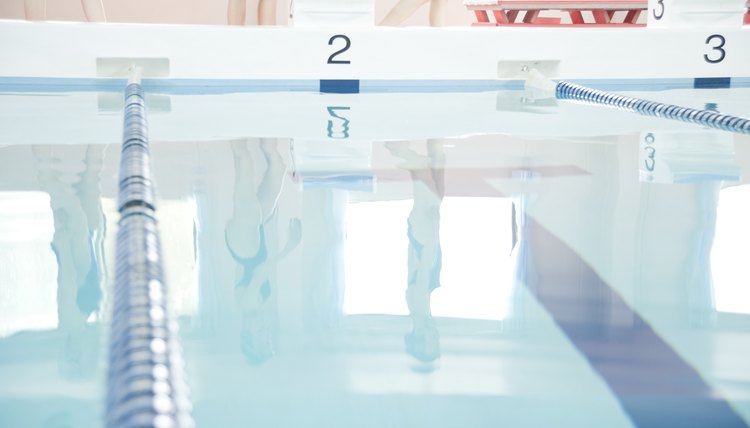What does fact checked mean?
At SportsRec, we strive to deliver objective content that is accurate and up-to-date. Our team periodically reviews articles in order to ensure content quality. The sources cited below consist of evidence from peer-reviewed journals, prominent medical organizations, academic associations, and government data.
The information contained on this site is for informational purposes only, and should not be used as a substitute for the advice of a professional health care provider. Please check with the appropriate physician regarding health questions and concerns. Although we strive to deliver accurate and up-to-date information, no guarantee to that effect is made.
What Are the Benefits of an Indoor Pool in Schools?

An indoor pool opens the door for sports opportunities that can be enjoyed throughout the year, without worrying about adverse weather conditions, such as snow, high winds or lightning. Whether a beginner or an experienced swimmer, an indoor pool allows every student to enjoy aquatic activities during physical education class. In addition to regular physical education classes, students can enjoy extracurricular activities, such as competitive swimming and water polo.
Swimming Education
Your child may be naturally drawn to water -- but it can also be a dangerous and life threatening experience if she is not trained in water safety. Learning the basic fundamentals of swimming during PE class or in an after-school program assures you that she is engaging in a safe aquatic experience. Once she learns to float, the instructor can move on to breathing lessons and how to hold her breath properly underwater. These are the starting points for learning the basics of how to paddle, swim and participate in aquatic activities. Not only will proper aquatic training teach your child how to swim -- training and water safety helps save lives.
Physical Education
The American Council on Exercise suggests that children and teenagers should have up to 60 minutes of exercise each day. An indoor swimming pool at the school provides a low-impact alternative to students who may have health issues and can't participate in running or other outdoor activities. While swimming, a student can burn up to 511 calories in 60 minutes. It also works most muscle groups in the body, improving flexibility and increasing muscle strength.
Life-Long Activity
Swimming is a life-long activity; once your student learns to swim, she can continue swimming for the rest of her life. Engaging in daily aquatic exercise may prevent your child from becoming overweight or obese. If she is currently overweight, she is likely to lose weight over the course of the school year with regular, daily aquatic exercise and other activities. This may help prevent the onset of type 2 diabetes, high blood pressure and heart disease.
After-School Activities
Participating in after-school sports activities at an indoor pool allows your child to compete with his peers, teaching him how to be a team player and practice good sportsmanship. Sports, including swimming and water polo, also reduce the chance of him getting in trouble by keeping him busy and preventing him from having too much time on his hands. Some schools lease their recreational facilities, including the pool, to other community and sports organizations, which can raise extra money for the school district.
Explore In Depth
References
Writer Bio
Julie Boehlke is a seasoned copywriter and content creator based in the Great Lakes state. She is a member of the Society of Professional Journalists. Boehlke has more than 10 years of professional writing experience on topics such as health and wellness, green living, gardening, genealogy, finances, relationships, world travel, golf, outdoors and interior decorating. She has also worked in geriatrics and hospice care.
